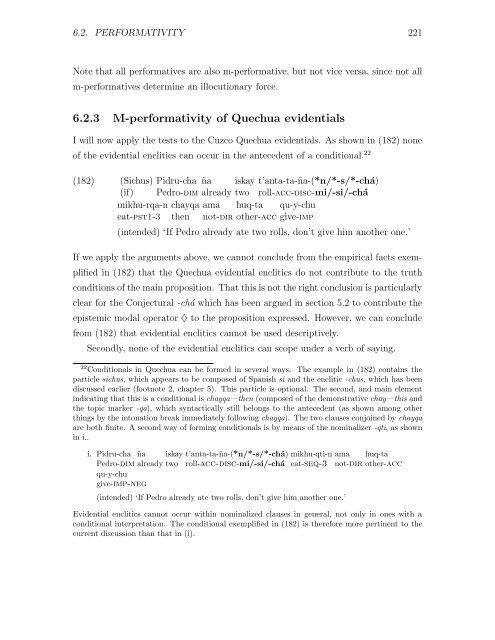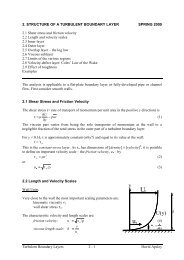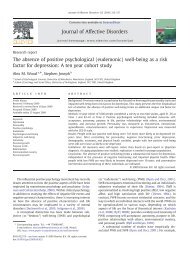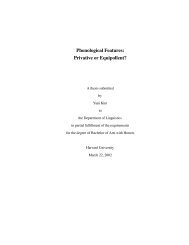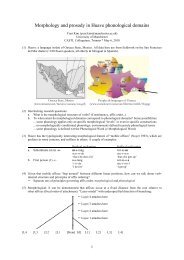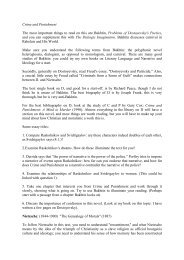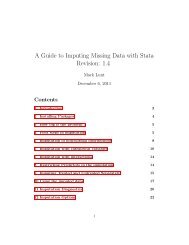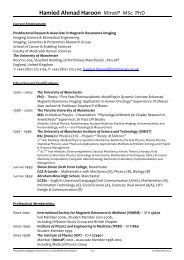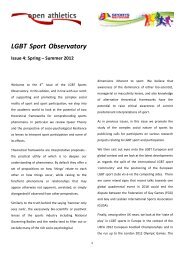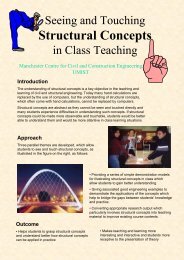semantics and pragmatics of evidentials in cuzco quechua
semantics and pragmatics of evidentials in cuzco quechua
semantics and pragmatics of evidentials in cuzco quechua
Create successful ePaper yourself
Turn your PDF publications into a flip-book with our unique Google optimized e-Paper software.
6.2. PERFORMATIVITY 221<br />
Note that all performatives are also m-performative, but not vice versa, s<strong>in</strong>ce not all<br />
m-performatives determ<strong>in</strong>e an illocutionary force.<br />
6.2.3 M-performativity <strong>of</strong> Quechua <strong>evidentials</strong><br />
I will now apply the tests to the Cuzco Quechua <strong>evidentials</strong>. As shown <strong>in</strong> (182) none<br />
<strong>of</strong> the evidential enclitics can occur <strong>in</strong> the antecedent <strong>of</strong> a conditional. 22<br />
(182) (Sichus) Pidru-cha ña iskay t’anta-ta-ña-(*n/*-s/*-chá)<br />
(if) Pedro-dim already two roll-acc-disc-mi/-si/-chá<br />
mikhu-rqa-n chayqa ama huq-ta qu-y-chu<br />
eat-pst1-3 then not-dir other-acc give-imp<br />
(<strong>in</strong>tended) ‘If Pedro already ate two rolls, don’t give him another one.’<br />
If we apply the arguments above, we cannot conclude from the empirical facts exemplified<br />
<strong>in</strong> (182) that the Quechua evidential enclitics do not contribute to the truth<br />
conditions <strong>of</strong> the ma<strong>in</strong> proposition. That this is not the right conclusion is particularly<br />
clear for the Conjectural -chá which has been argued <strong>in</strong> section 5.2 to contribute the<br />
epistemic modal operator ¦ to the proposition expressed. However, we can conclude<br />
from (182) that evidential enclitics cannot be used descriptively.<br />
Secondly, none <strong>of</strong> the evidential enclitics can scope under a verb <strong>of</strong> say<strong>in</strong>g.<br />
22 Conditionals <strong>in</strong> Quechua can be formed <strong>in</strong> several ways. The example <strong>in</strong> (182) conta<strong>in</strong>s the<br />
particle sichus, which appears to be composed <strong>of</strong> Spanish si <strong>and</strong> the enclitic -chus, which has been<br />
discussed earlier (footnote 2, chapter 5). This particle is optional. The second, <strong>and</strong> ma<strong>in</strong> element<br />
<strong>in</strong>dicat<strong>in</strong>g that this is a conditional is chayqa—then (composed <strong>of</strong> the demonstrative chay—this <strong>and</strong><br />
the topic marker -qa), which syntactically still belongs to the antecedent (as shown among other<br />
th<strong>in</strong>gs by the <strong>in</strong>tonation break immediately follow<strong>in</strong>g chayqa). The two clauses conjo<strong>in</strong>ed by chayqa<br />
are both f<strong>in</strong>ite. A second way <strong>of</strong> form<strong>in</strong>g conditionals is by means <strong>of</strong> the nom<strong>in</strong>alizer -qti, asshown<br />
<strong>in</strong> i..<br />
i. Pidru-cha ña iskay t’anta-ta-ña-(*n/*-s/*-chá) mikhu-qti-n ama huq-ta<br />
Pedro-dim already two<br />
qu-y-chu<br />
give-imp-neg<br />
roll-acc-disc-mi/-si/-chá eat-seq-3 not-dir other-acc<br />
(<strong>in</strong>tended) ‘If Pedro already ate two rolls, don’t give him another one.’<br />
Evidential enclitics cannot occur with<strong>in</strong> nom<strong>in</strong>alized clauses <strong>in</strong> general, not only <strong>in</strong> ones with a<br />
conditional <strong>in</strong>terpretation. The conditional exemplified <strong>in</strong> (182) is therefore more pert<strong>in</strong>ent to the<br />
current discussion than that <strong>in</strong> (i).


